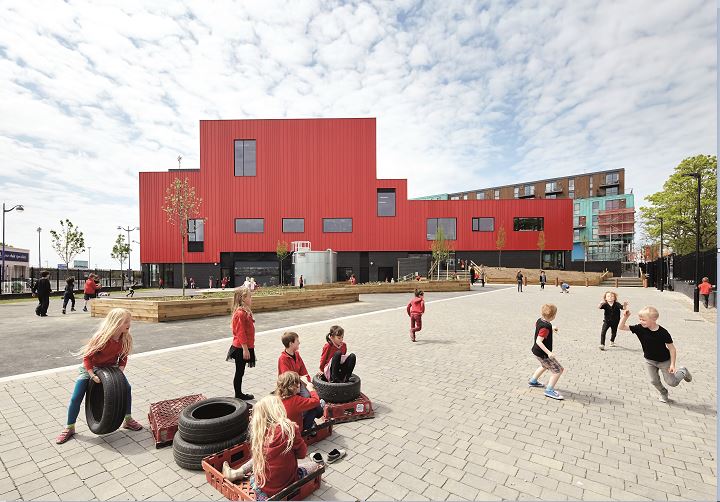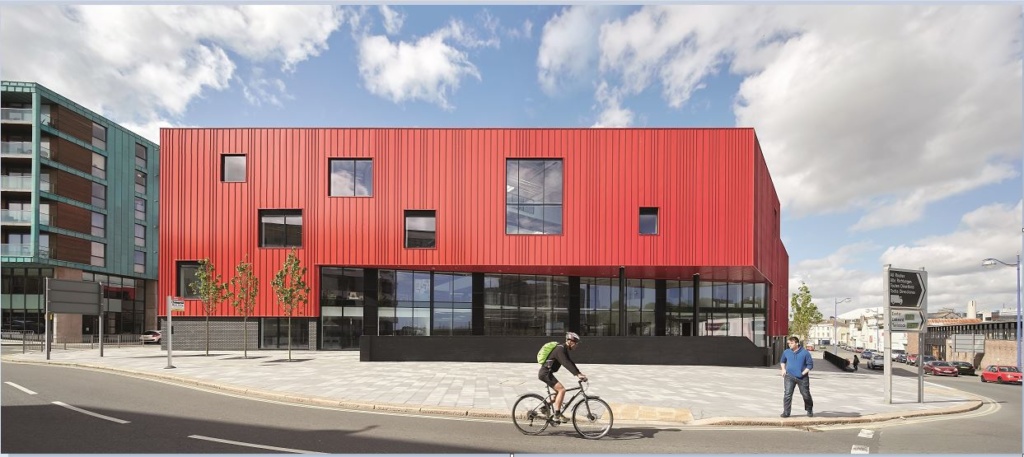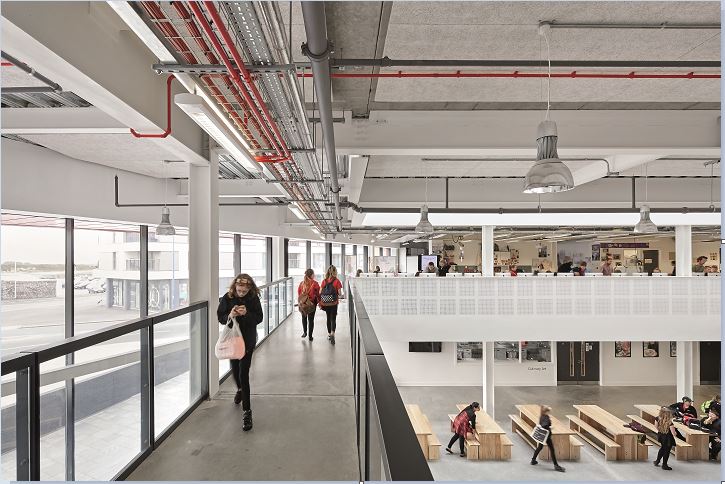
‘Our building, The Red House, with its dramatic overhang and strong colour scheme, is a physical representation of our creative and aspirational approach’. You could be forgiven for thinking this line comes from a tech-savvy city startup or a thriving creative design agency, but the truth is far more exciting… this is the Plymouth School of Creative Arts, a beacon of hope for education in the South-West of England. A school which embraces creative learning in all subject areas in environments that were built for making.
Plymouth School of Creative Arts is a 4-16 mainstream, city centre, all-through school sponsored by Plymouth College of Art. The vision for Plymouth School of Creative Arts grows out of an established art college ethos in response to the serious erosion of the arts and creativity in schools. Founded in 1856, Plymouth College of Art has a long history as an independent specialist in arts, craft, design and media education in Plymouth and the South West of England.

The building is iconic, it stands broad in its urban post-industrial environment, a catalyst for community regeneration in Plymouth’s Millbay docklands, an area included amongst the 10% most deprived neighbourhoods in the country. The colour means it cannot be missed. Yet despite this, nothing about the exterior screams ‘school’. There is no branded signage or ghastly banners, just a simple sense of belonging through design.
The building recently picked up a RIBA (Royal Institute of British Architects) South West Award with the judges stating, ‘The mixed response to the urban grid and street geometry – following and repairing the urban grid on the south and breaking rank on the north is successful in creating a very legible public/private divide. On the public side the entry is strongly stated on the street and leads to a procession through the building via lofty atria that makes for easy orientation’. They continue, ‘This is a large school in a single wrapper, with a diversity of spaces including long-span large-volume hall, theatre, dance studio, technical spaces et al neatly stitched together in a free-flowing plan.’ For me, this is what makes the school so exciting, they’ve really thought hard about the sort of spaces needed to match their pedagogy. With this, comes a beautiful harmony of large open spaces to support learning alongside specialist spaces/studios all equipped with the latest tools and technology to enable better learning.

Light floods into this building and as I enter I cannot help but be impressed with the calm but bright first impression. As I look into a large atrium space, I’m inspired by beautiful, high quality artwork - a mix of learner work and visiting artists. The work is spread throughout the four floors but never becomes cluttered or over-stimulating. Alongside the work is often a citation about the background of the piece. There is a strong sense of the natural environment throughout, from the solid wood dining tables and benches that dominate views across the central ground floor space to the wooden sail boat that hangs delicately above my head. All of this is in stark contrast to the industrial view and provides a sense of balance and reason in our world.
Furniture has been carefully selected to match the pedagogical need but unlike so many new-build projects this doesn’t mean throwing the baby out with the bath water. At Plymouth School of Creative Arts, you can see an excellent mix of new and bespoke furniture alongside reclaimed and repurposed items. Among these reclaimed and repurposed items, I saw old shop counters that you may expect to find in a haberdashery store or similar used to exhibit the learners’ work. In one corner, I find a second-hand sofa repurposed for a new life. The sofa, which may have been used in a bachelor pad during its former-life, created a zone within a learning space and immediately added depth and meaning to the space.